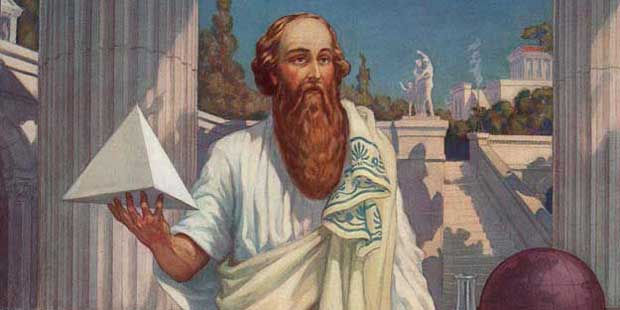
An introduction- Who was pythagoras?
Pythagoras, a name you may have heard before. The name belongs to an Ionian Greek philosopher that lived from 570 BC to 495 BC. His teachings, mainly political and religious, influenced the philosophies of Plato and Aristotle, and with this influenced Western philosophy as a whole. He had only begun his journey of discovery when he had migrated to Italy, where the majority of his philosophical activity occurred. Pythagoras was perceived as a semi-divine figure, and was praised for his delve into Greek Philosophical tradition. To this day, he is deemed a mathematical genius and scientist. He was not however only known for his interest in mathematics and scientist; he was also known as the expert on fate of soul after death (he believed a soul was immortal and underwent several reincarnations), an expert of religious rituals, and a founder of a strict way of life (an introduction to dietary restrictions, excessive self discipline and extreme religious practices.)
The theory
Nevertheless, this article will discuss Pythagoras’s theorem, a mathematical theory that influenced and guided one of the most important branches of the field of mathematics, geometry.
The theory is a fundamental relation in Euclidean geometry (a mathematical system attributed to Greek mathematician Euclid) between the three sides of a right angled triangle. It explains the relationship between the pythagorean sides. The theory states that “In a right-angled triangle, the square of the hypotenuse side is equal to the sum of squares of the other two sides“. The theorem is used to find the length of an unknown side and angle of a triangle. From this theorem, we can derive the formulas for the lengths of the hypotenuse (the longest side, opposite the right angle), the base, and the perpendicular side. The theorem can be expressed in the formula: c2 = a2 + b2.
How did this theorem come to be?
The theory was introduced by Pythagoras, who had formed a large group of mathematicians which worked religiously on numbers and lived somewhat like monks. In this group, Pythagoras was the mathematician that had first stated the theory, and therefore it was named after him. However, although Pythagoras was credited, many do believe it was not all his work, but also included the work of colleagues and previous geniuses which existed before him.
Proof of the theorem
There are currently more than 300 different proofs of the Pythagorean theorem, including ones by the Greek mathematician Pappus of Alexandria (who flourished around 320 CE), the Arab mathematician-physician Thbit ibn Qurrah (who lived from 836 to 901), the Italian artist-inventor Leonardo da Vinci (who lived from 1452 to 1519), and even American President James Garfield (1831–81).
Proofs include the rearrangement proof using the area of two squares, algebraic proof which uses four copies of the same triangle arranged symmetrically around a square with side c, similar triangles which states that no matter how big or small the triangles are, the ratio of any two corresponding sides of similar triangles are the same, and many more. Those mentioned are proofs which are taught at certain schools to deepen a child’s understanding of the theorem.
Conclusion- The theory changed geometry for the better, and aided people in professions such as architecture and construction, sailing and navigation (to find the shortest distance in two dimensional navigation), geographers and geologists (the steepness of slopes of mountains) and many more. The Pythagorean theorem expanded our understanding of numbers while also being useful in the important processes mentioned above. The Greeks established the existence of numbers that could not be stated as rational numbers according to Pythagoras' theorem. It is a theorem taught is the majority of curriculums around the globe and has benefitted mathematicians and will continue to for years to come.



Comments